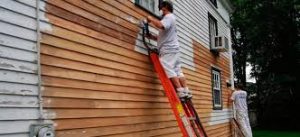Painting Preparation for Your Home
Imagine living in an unpainted house. That would be a terrible sight because paint brings life and color into our lives. However, painting a house has additional benefits including keeping dirt and dust away from your walls. Others are hiding permanent marks and increasing the resale value of your home. Unfortunately, challenges exist when it comes to house painting.
For example, flaking is a common problem in many homes. It occurs when the surface of the walls are too smooth or chalky. Paint blisters are also common if the wall is damp. Other problems include crazing, a visible under-color, or stains among others. Avoiding these issues is possible if you prepare well for a painting job. Remember, most of these problems are preventable because they are predictable. Here are the top three things to do in preparation for house painting.
– Preparing the wall
This exercise creates an even surface so that the paint moves across it smoothly and dries perfectly. Uneven  surfaces translate into blisters or dents. They also make it easy for the paint to break off and fall after drying. The first step is removing old paint. You can remove it through scraping. A manual scraper should be enough for you to get it done. However, you can go for an electric one that uses heat or rotating motion to remove the paint. Then you have to sand the wall so that the surface is smooth and even. Identify areas that need your attention after that. For instance, cracks in the wall’s surface require filling material.
surfaces translate into blisters or dents. They also make it easy for the paint to break off and fall after drying. The first step is removing old paint. You can remove it through scraping. A manual scraper should be enough for you to get it done. However, you can go for an electric one that uses heat or rotating motion to remove the paint. Then you have to sand the wall so that the surface is smooth and even. Identify areas that need your attention after that. For instance, cracks in the wall’s surface require filling material.
– Preparing the primer
Primers are undercoats that painters apply on a wall before they paint the house. They are critical to any painting process especially when it comes to residential buildings. One of their functions is to increase the durability of the paint. Another one is to improve the adhesive qualities of the paint so that it sticks to the wall. Its final function is to provide additional protection for the surface you are painting. Denver painters will tint a primer before applying it on the wall. You can also do that by adding a bit of the colored paint to it. The paint and the primer should be compatible if you want perfect results. Do not trim it with an incompatible paint.
– Prepare the right materials for the job
Unfortunately, many people realize that they need specific tools or equipment after they start painting. That means they have to leave the job unfinished as they search for these things. In some cases, they settle for a shoddy job using the materials at hand. Make sure that you assemble the right materials for house painting. Your checklist should include a tape measure, screwdriver, primer, sponge, stirrer, and drop cloths. Other items are also critical such as a screwdriver, hole-filler, roller cover, roller tray, and a screen. Moreover, you should get a tray liner and an angled sash paintbrush. Start working when you have assembled all of them so that you can avoid unnecessary interruptions.